This post may contain affiliate links. Please read our disclosure for more info.
We have all been there— one day you are feeling super strong and accomplished from a challenging and invigorating workout, however, the next day your muscles feel extremely tired and fatigued. Sore and tight muscles after working out is extremely common and something that even the most experienced athletes experience from time to time. But what is the best way to reduce sore muscles and recover from tight hamstrings or painful glutes? Can yoga help?
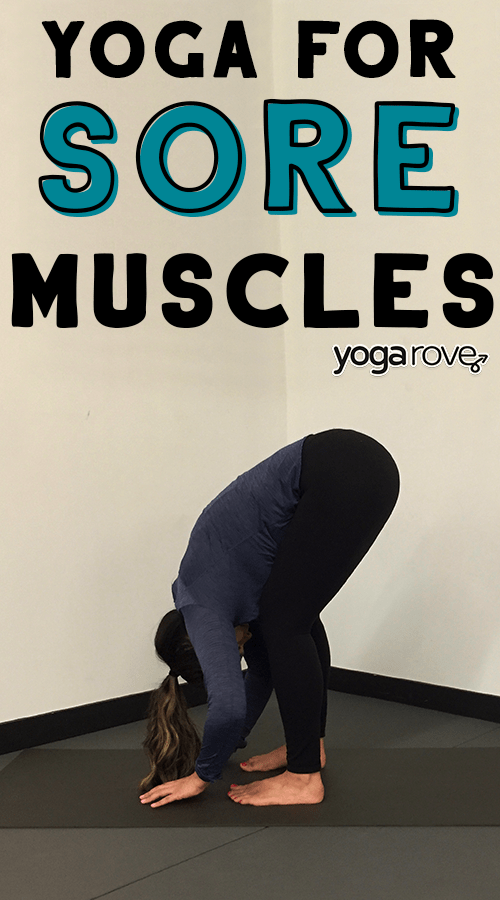
Do yoga poses help reduce sore muscles? There are certain yoga poses and yoga practices that can definitely help to reduce sore muscles. There are yoga practices that are more vigorous and intense, but if you are looking to recover and ease muscle soreness, you can practice more restorative and relaxing yoga poses in order to do so.
That feeling that you get the day after an intense amount of physical activity is called Delayed Onset Muscle Soreness, or DOMS. Usually occurring 1-2 days after your workout, DOMS is totally normal and often felt in muscles that haven’t been worked out as intensely before. When you do a new workout or change up your routine, you are more likely to get DOMS than if you do the same workout routine every single day.
Often, when you have DOMS, it can feel as if the best thing to do is just to not move your body at all. However, gentle movement and certain yoga poses can ease muscle soreness and promote healing in your body. There are also different practices that you can do before, during, and after your workout to reduce muscle soreness.
How do you relieve sore muscles fast?
It’s the morning after a new workout and it feels like every part of your body is sore and tired. So how do you get rid of DOMS or at least find fast relief? While you likely have to ride it out for 1-2 days while your muscles recover, there are certainly different things that you can do to ease any muscular discomfort that you may have and reduce sore muscles.
- Before your workout, make sure that you stretch and warm up. To reduce the amount of soreness you will feel after your workout, take a few minutes before to stretch out your muscles. Light stretches or a light jog to warm up can go a long way with avoiding more soreness the next day.
- During your workout, be aware of using the proper muscles and form and be sure to listen to your body. Sometimes we can tend to push too hard, or overcompensate by using the wrong muscles so be sure to be aware of your body and what you are putting in through.
- Be sure to hydrate before, after, and during your workout. Taking in water and electrolytes helps to decease muscles soreness, inflammation, and prevents muscle cramps.
- After your workout, take an ice cold shower. The cold temperatures reduce muscle soreness in the body. Still feeling a little sore a few hours later? Use some heat by placing a heating pad on your sore muscles to stimulate blood flow and loosen up your muscles.
- Utilize restorative tools to help you recover. If you are suffering from DOMS the following day, use a foam roller or try some self-massage to loosen your muscles and ease any soreness. Also be sure to move your body, whether it is a walk around your neighborhood or some restorative yoga poses.
Is yoga good for muscle recovery?
Certain types of yoga practices and poses are great for muscle recovery. If you are recovering from a rigorous HIIT workout and your muscles feel fatigued, it is probably not a good idea to jump into an Ashtanga class the next day if you are looking to find relief for your muscles. There are many schools of yoga and different types of yoga practices and it is important to find the right one if you are targeting muscle recovery.
Restorative yoga or Yin yoga are great practices for rest and recovery to reduce sore muscles. Different from a fast paced vinyasa practice where you are holding challenging poses like plank or crow pose, these restorative practices are perfect for active recovery as they are slower and more relaxed. In both practices, you hold each pose for longer periods of time and are encouraged to use props and be as comfortable and relaxed as you can be.
You don’t even have to do a full Restorative or Yin yoga class to reduce your sore muscles. There are many yoga poses that you can practice on your own at home right after a workout, or the next day if you are experiencing DOMS. Just remember that if your intention is to practice yoga for active recovery, it is a good idea to stick to more restorative and relaxing poses instead of intense and powerful poses.
Does yoga help with muscle tightness?
The practice of yoga has numerous benefits including stress relief, better sleep quality, improving muscular strength and balance, and increasing flexibility. If you feel that you have very tight muscles, don’t let that discourage you from trying out the practice.
Often, many non-yogis will see yogis contorting their bodies into crazy shapes and think that there is no way they should even get on a mat because they are not flexible. However, flexibility is not a prerequisite to practicing yoga. In fact, if you do have very tight muscles, yoga will be even more beneficial to you.
Moving with the breath and holding different shapes helps to open up the body and increases flexibility. After a few classes and with consistent practice, you will begin to see the changes in your body from yoga and may notice that the muscles that used to feel tight may feel more loose and open. With time, you will be able to feel your progress and experience more flexibility in your body.
Tips for Practicing Yoga for Muscle Recovery
- Listen to your body: If your muscles are feeling sore and fatigued, it is even more important to listen to your body and give yourself what you need. If a specific yoga pose feels too intense or even painful, skip the pose and find something that feels more soothing. It is normal to feel a little discomfort, especially with DOMS, but if you are feeling a sharp pain, back off from the pose.
- Try not to overstretch: While it is always a good idea to stretch before and after a workout, make sure that you are not overstitching while in your restorative yoga pose. Overstitching can cause injury in the body, so find your edge, but be aware and mindful as to not go over your edge.
- Choose poses that are relaxing and restorative: It is likely that a side plank is not going to feel as good as a reclined bound angle pose if your body is craving some restorative yoga. If you are looking to reduce your sore muscles with yoga, choose postures that are restorative and soft, instead of intense and fiery. It may be better to skip that dynamic power flow class and take a relaxing yin class instead.
- Breathe: Your breath is so important when practicing yoga. When you are in deeper and more restorative poses, use your breath to relax and stay present. If you notice that you are breathing in and out of your mouth, or that your breath is shallow and jagged, work on finding a slow, relaxed breath. This breath will help you to find softness and relax your muscles more, allowing for more recovery of fatigued muscles.
- Use props: It is important to feel comfortable when practicing yoga poses to reduce sore muscles. Use as many blocks, blankets, and bolsters to prop you up. The more you feel supported, the more you will be able to relax and recover.
- Take care of yourself after practice: During your recovery days of practicing your restorative yoga poses, hydrate, eat well, and get enough sleep. Give your body exactly what it needs so that it is able to recover faster.
Yoga Poses to Reduce Sore Muscles
When practicing yoga with the intention of easing sore muscles, it is important to listen your body and not to push yourself. Be aware and mindful of your breath, and back off anytime you feel that it may be a little bit too much for your body. You can practice the following poses as a sequence, or you can practice a few poses every day, depending on which parts of your body need more attention.
Child’s Pose
Feeling the strain on your lower back from an intense HIIT workout or from sitting at your desk all day? Childs pose is a soothing pose that allows for a lower back release, opening of your hips and inner thighs, shoulder relaxation, and spine extension.
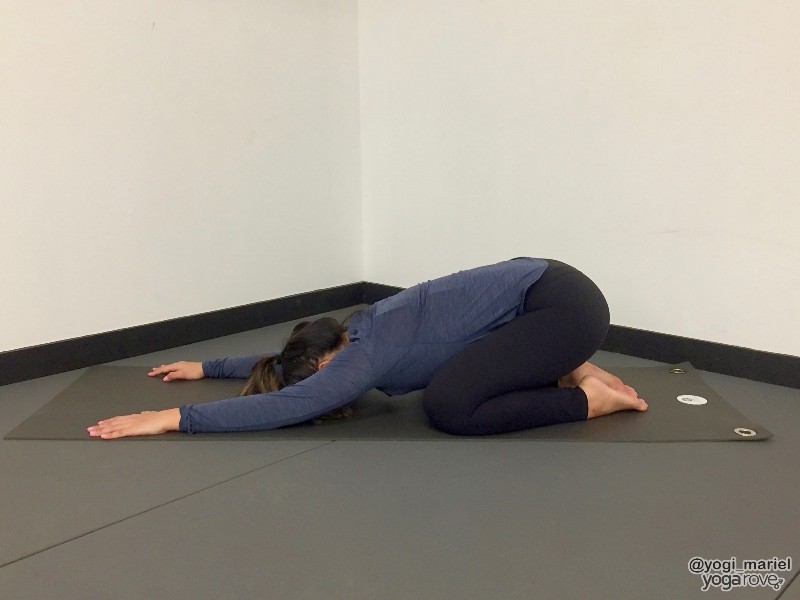
- Begin at the center of your mat and take your knees apart mat-width distance.
- Sit your hips down to your heels and gently rest your forehead down on the mat.
- Allow your elbows to bend slightly and your palms to rest on the mat.
- Feel your shoulders relax away from your ears and your hips sink down toward your heels.
- Soften your heart down to the mat, close your eyes and stay for at least 5 deep breaths.
Forward Fold
If you are a runner or have tight hamstrings, this pose will feel like a dream. Any forward fold is a great release for the lower back and a nice stretch for your hamstrings.
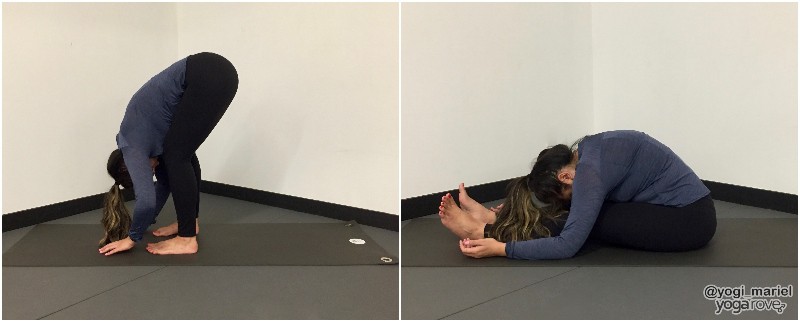
- Stand on your mat with your feet hips width distance apart.
- Bend your knees deeply and fold at your hips so that your stomach touches your thighs and your head is completely relaxed.
- Hold on to opposite elbows or allow your fingertips to graze the mat.
- Relax your head, shoulders, and upper body completely and keep your belly drawing in to protect your lower back.
- You can keep your knees bending as deeply as you want, but if you would like to feel more of a stretch in your hamstrings, gently begin to straighten your legs and shift your weight to the balls of your feet. Stay for at least 5 breaths.
Optional: You can take a seated forward fold by sitting down on your mat and extending your legs straight out in front of you. Allow your upper body to hang heavy over your legs and relax your shoulders and head. Use blocks to rest your elbows on if you need more support. You can also choose to stretch one leg out at time in addition to stretching both legs out.
Lizard Pose
This pose hits your hip flexors, hamstrings and tight quads and can feel very opening and nourishing in the body. Use blocks for more support in front of you if needed, and breathe deeply as you move deeper into the pose.
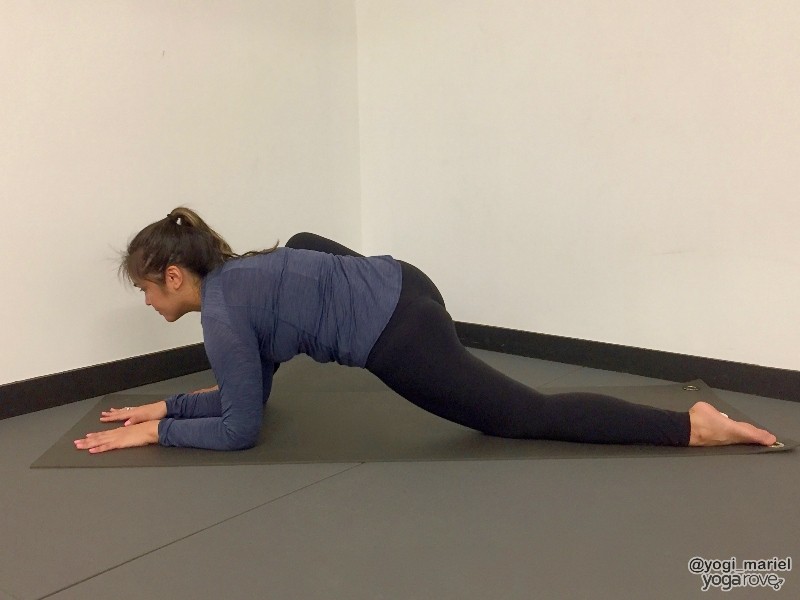
- From a forward fold, step one foot back behind you and place your knee on the mat.
- Take your front foot out to the edge of your mat and rest your hands on the mat or blocks to the inside of your knee.
- If you feel that you can soften into the pose even more, take your back knee a few inches more to the back of the mat. Allow your upper body to relax down while you keep your hips square.
You may be able to take your elbows on the mat and can even lift your back knee up for a more intense stretch. Stay for 5 breaths on each side.
Bridge Pose
Shoulders or chest feeling tight? In addition to stretching out your hip flexors, bridge pose allows for an opening in the front of your body and your heart space. This can feel great if you have a sore chest or tight shoulders.
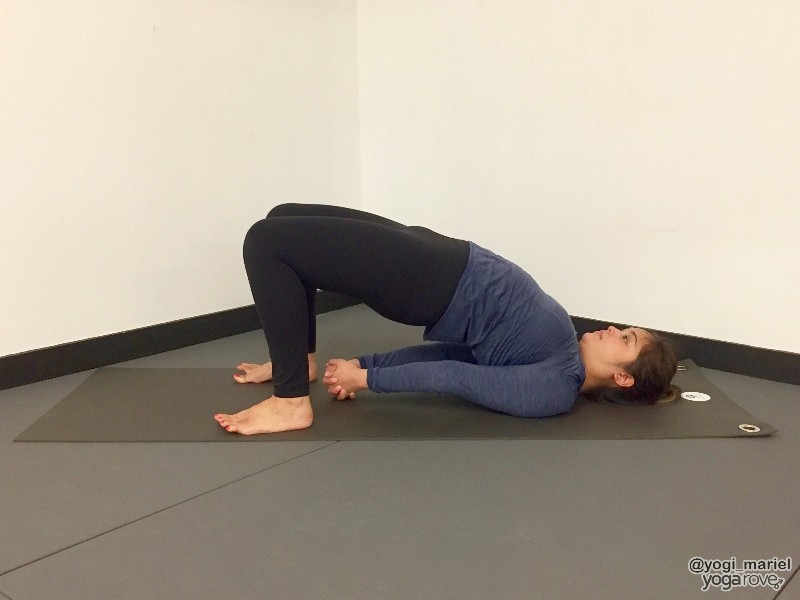
- Lie down on your mat and take your feet flat on the floor. Your feet should be hips width distance apart with your knees pointing up to the ceiling.
- Walk your heels in so that your fingertips lightly touch onto your heels and keep your palms facing down on the mat.
- As you inhale, lift your hips up and take your shoulder blades closer together to feel your chest lift straight up to the ceiling. You can choose to place a block underneath your sacrum, or interlace your fingers behind your body.
- If you interlace your fingers, squeeze your palms tight, roll the shoulder blades together, and lift your chest to your chin. Root down through your heels and stay for at least 5 breaths.
Reclined Bound Angle
Worked too intensely on your workout and feel it specifically in your hips? This restorative yoga pose allows you to soften and release your muscles.
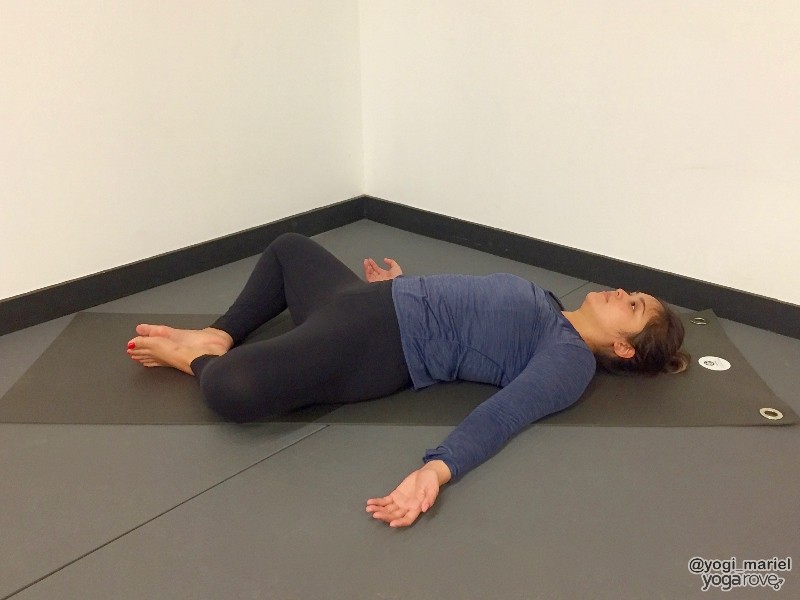
- Lying down on your mat, take the soles of your feet together to touch and point your knees to either side of the room.
- If this feels too intense, take one block underneath each knee for more support. You can readjust and take your heels closer or further away from your body.
- Keep your arms relaxed alongside your body with your palms facing up. Allow your entire body to relax and stay for 8 long breaths.
Supine Twist
A juicy twist always feels great in your body. This reclined twist stretches your glutes, opens the side body, and realigns your spine.
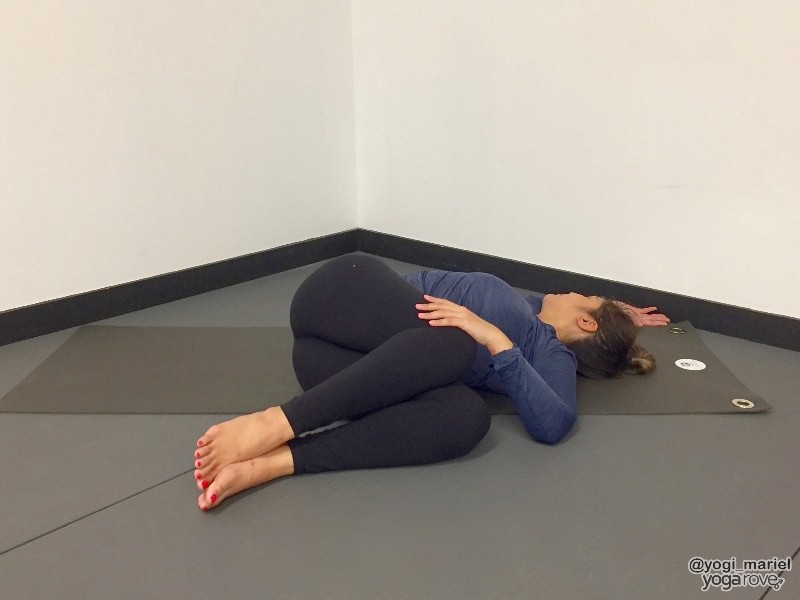
- Lie down on your mat and hug both of your knees into your chest.
- Gently drop your knees over to your right and take your left arm out to the left with your palm facing down to the floor. You may have to scoot your hips more to the left in order to stack the left hip onto of your right hip.
- Keep your left shoulder on the floor and don’t worry about your knees touching the mat, you can always place your knees on top of a block.
- Turn your head to face the left side and bring your chin toward your left shoulder. Close your eyes and stay for 8 breaths before switching sides.
Legs Up Against the Wall
This posture stimulates blood circulation and feels great after a long run or intense cardio workout. Fresh, oxygenated blood flows back into your muscles, allowing for recovery and rejuvenation.
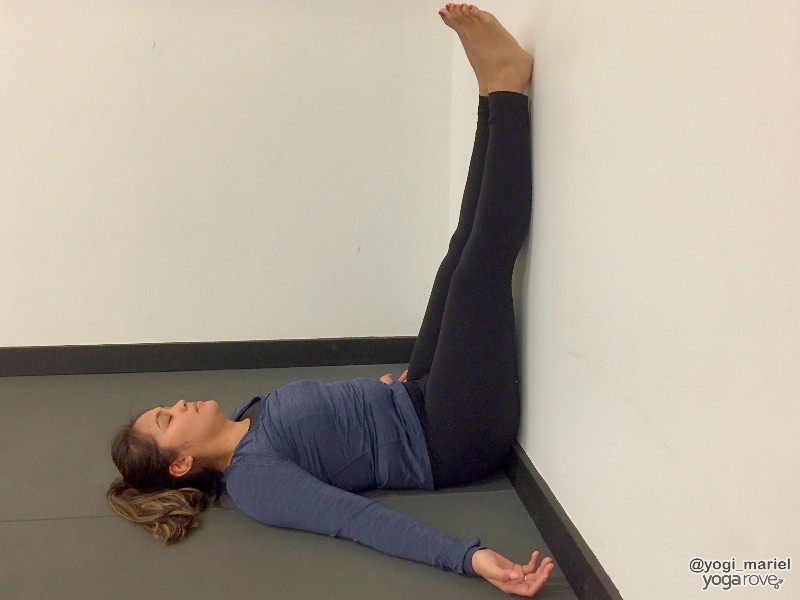
- Sit down next to the wall with one of your hip bones touching the wall.
- Keeping your hipbone as close to the wall as possible, begin to lay back and lift your legs up against the wall.
- Scoot your seat closer to the wall once you are on your back, and allow the arms to relax alongside your body.
- Keep your legs relaxed, close your eyes and stay for 1-2 minutes.
Related Questions
Can I take a hot bath to reduce sore muscles? Hot baths can also be a great way to relax your muscles. It puts your body in a more relaxed state, allowing you to heal and recover. Throw in some Epsom salts for even more relief.
What is Yin yoga? This style of yoga promotes flexibility in the body with its deep postures and long holds. It also opens up the body’s energy center and allows energy to flow easier in the body.


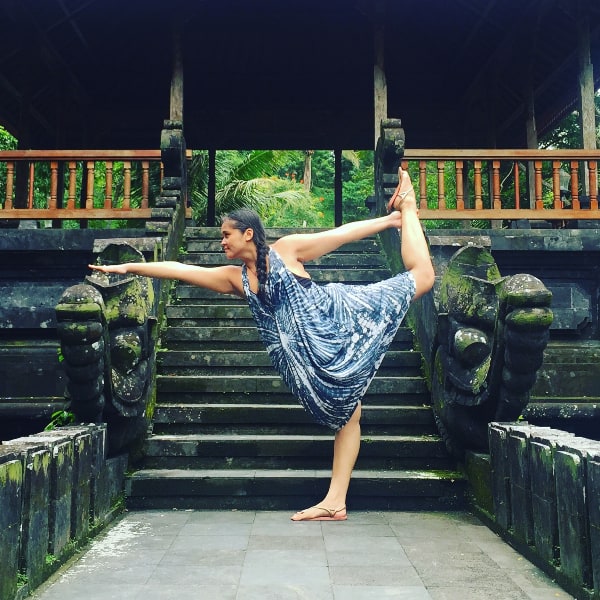
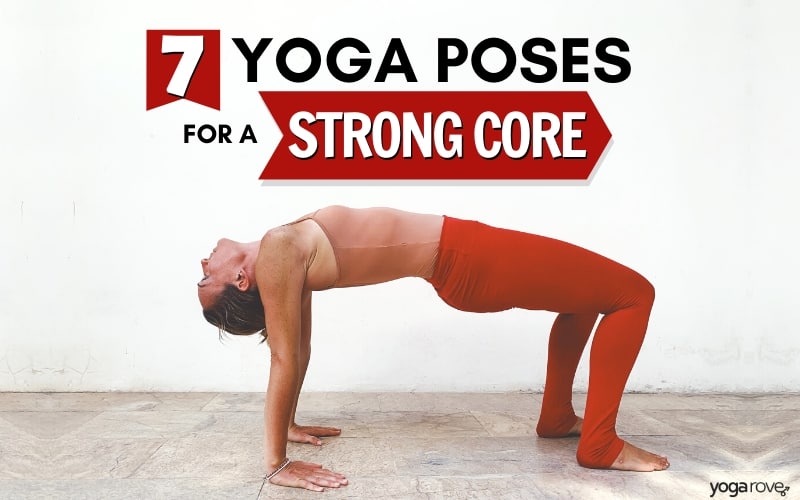
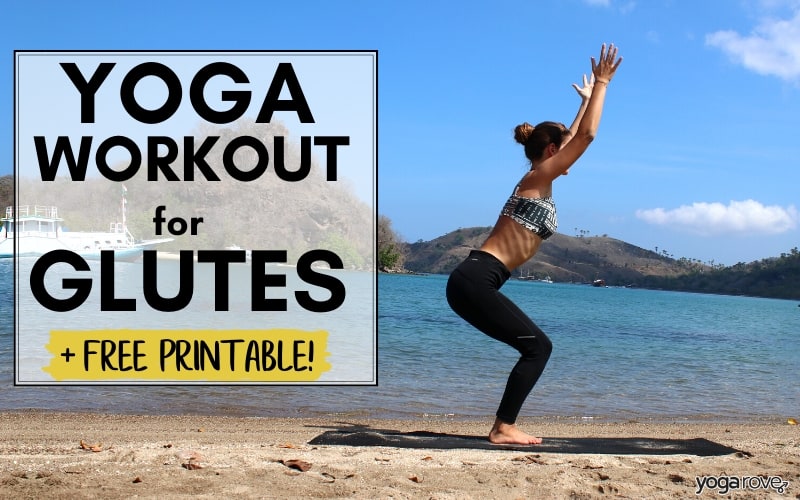
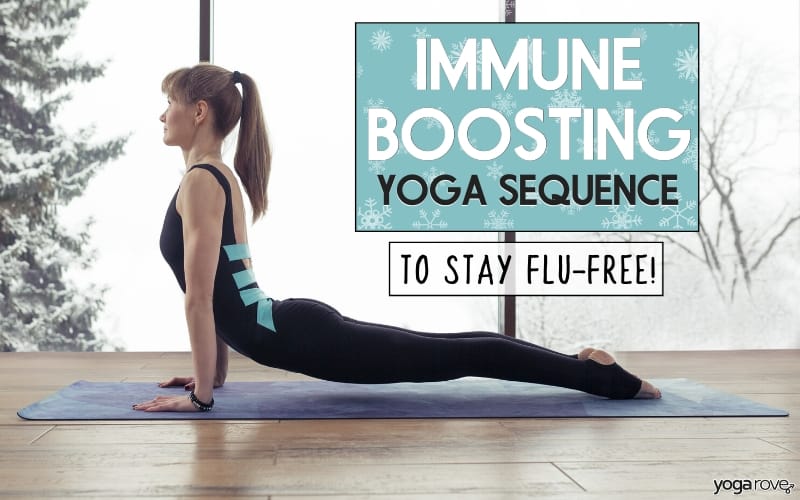
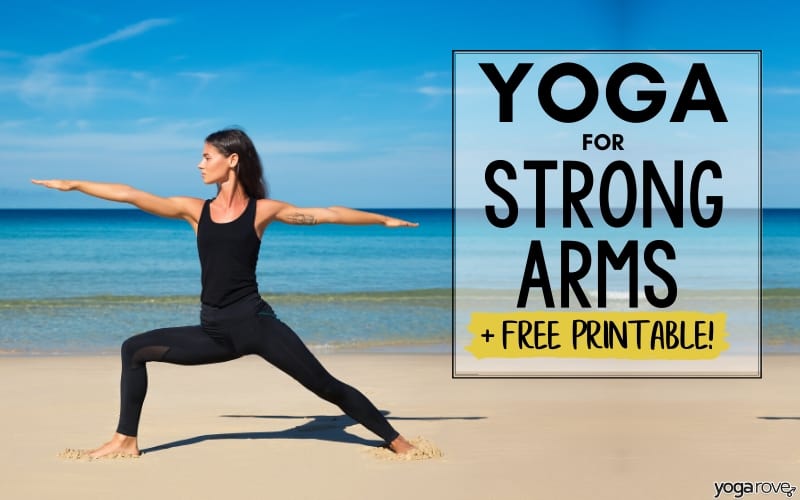
After an 11 mile bike ride to test my endurance, I felt great; however, I was sore the next day. Instead of working out, I opted for yoga followed by a hot shower. And felt great!
My health adviser told me that yoga played a great part in my recovery because of the stretching that is involved. To learn more about yoga’s part in muscle recovery, I did a google search and found this info.
Thanks! I learned a lot.
Glad you found it helpful Cristalynne!